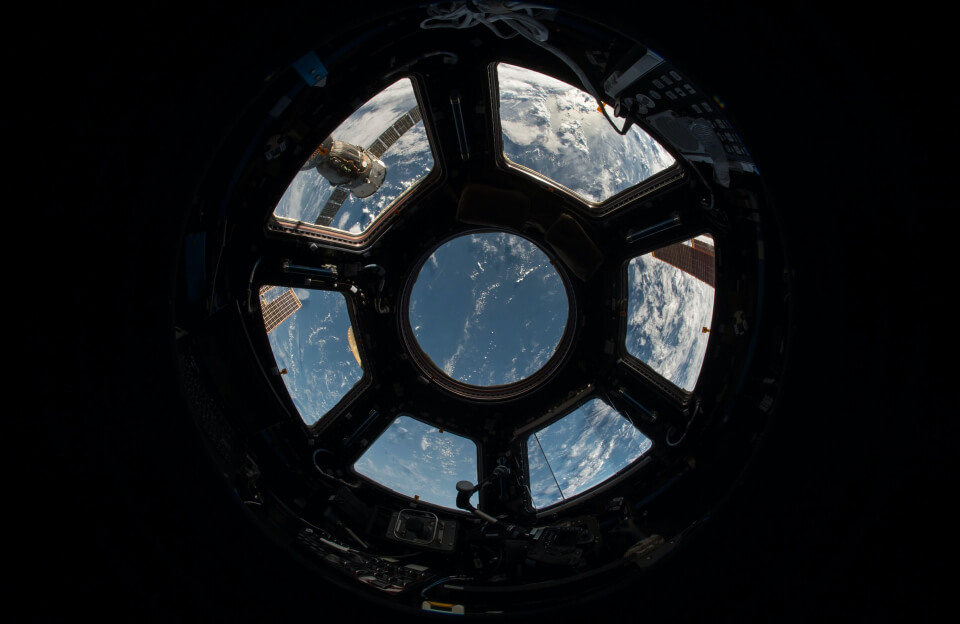You’ll find concise, practical rundowns of the newest phones—from iPhone 17 and its Pro/Pro Max camera upgrades to the compact iPhone 16e, Pixel 10 series, Pixel 10 Pro XL for bigger screens, the Pixel 10 Pro Fold, and budget picks like the Moto G Power (2025).
Each review explains standout features, trade-offs (camera vs. battery, performance vs. price), and who should buy which model, so you can compare options before you decide.
The Latest iPhone: iPhone 17
You’ll want to weigh the iPhone 17’s good sides, like its faster processor and improved battery life, against its flaws such as the higher price and limited customization compared with some Android phones.
I’ll explain who benefits most—students who need long battery life, professionals who use demanding apps, and casual users who prefer simplicity—and give concrete examples and steps to decide if it’s right for you.
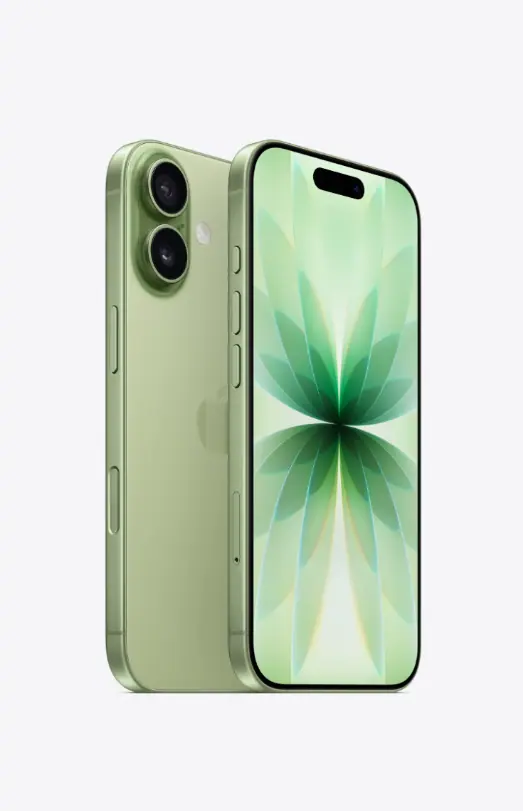
If you want, we’ll compare specific features side-by-side and run through a quick checklist to match the phone to your needs.
Good Sides
Often, the iPhone 17 feels like a Pro model in a standard package, bringing high-end features to more users without the Pro price. You get ProMotion, a 120 Hz refresh rate that smooths scrolling and gaming, and an always-on display that shows time, notifications, and widgets without waking the phone.
The A19 chip improves snappiness for app switching and powers background features like Apple Intelligence. The 6.3-inch bright screen (3,000 nits peak) helps you see content in sunlight, and Ceramic Shield 2 plus IP68 rating add durability.
Dual 48MP rear lenses and an 18MP front camera give higher-resolution photos and wider group selfies. Overall, you’ll notice faster responsiveness, better visuals, and strong battery life for extended use.
Flaws
While the iPhone 17 delivers many premium features, its design and camera choices leave room for improvement.
You’ll notice the iPhone 17’s simple look feels basic next to the fully redesigned iPhone 17 Pro and 17 Pro Max, and you might expect more meaningful visual updates. You’ll also miss a triple-lens camera setup with a dedicated telephoto camera for longer-range shots; that optical zoom lens improves portrait and distant detail.
Competitors like the Google Pixel 10 and Samsung Galaxy S25 include triple-lens camera systems, so the absence on the base iPhone 17 feels like a step back. If you value flexible photography, consider testing zoom and low-light shots before committing to the iPhone 17.
For Whom
For most people, the iPhone 17 strikes a practical balance between advanced features and everyday ease of use. If you want reliable performance without paying for every pro-level upgrade, the iphone 17 is the sensible pick. You’ll get smooth app handling, all-day battery life with fast-charging support, and a camera system that delivers vibrant images for social posts or casual photography.
Choose the iphone 17 pro only if you need extra display tech, higher zoom, or specialized pro apps—those are genuine but niche gains. For students, commuters, and casual creators, the regular model covers core needs affordably. Try a hands-on demo to confirm size and feel, check battery drain with your apps, and compare sample photos before deciding.
Larger Displays and the Greatest Cameras: iPhone 17 Pro and iPhone 17 Pro Max
You’ll find the iPhone 17 Pro and Pro Max pack larger OLED displays that make video, gaming, and side-by-side multitasking clearer and more immersive.
They also bring the greatest camera systems Apple offers—more advanced sensors, improved low-light performance, and ProRAW/ProRes options (ProRAW is a high-detail photo format; ProRes is a high-quality video codec)—but those upgrades add weight and cost.
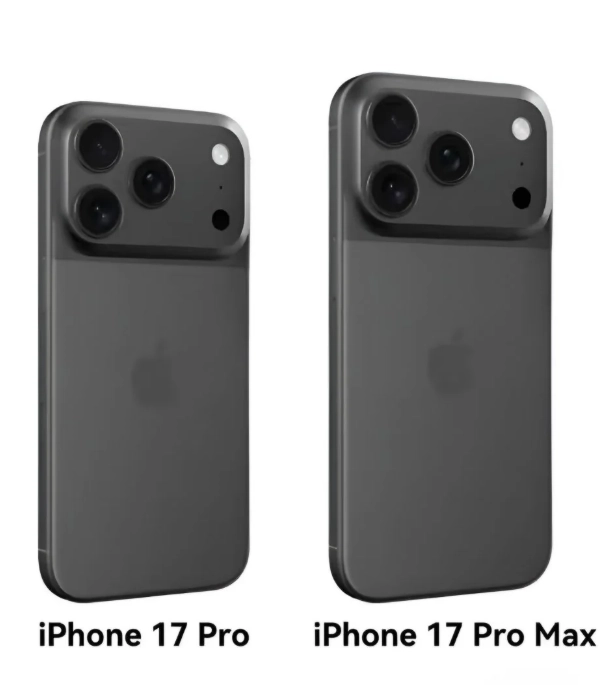
Think about who’ll benefit most: creative pros and heavy multimedia users will get real value, while casual users may prefer a smaller, less expensive model.
Good Sides
Often the biggest selling points of the iPhone 17 Pro and 17 Pro Max are their larger, brighter displays and markedly upgraded cameras, which together make them excellent choices for media consumption and photography.
You’ll notice 6.3- and 6.7-inch panels that hit 3,000 nits, so outdoors viewing stays readable and HDR content looks punchy.
With Ceramic Shield 2 protecting front and back, you get tougher glass against drops and scratches.
The triple 48-megapixel system, including a 48-megapixel telephoto with 4x optical zoom, produces sharp, detailed shots even when you crop.
The A19 Pro processor plus vapor-chamber cooling keeps editing and gaming fluid without overheating.
If you want longevity, beefy storage options and strong battery life round out the positives.
Flaws
While the large, bright displays and top-tier cameras make the iPhone 17 Pro and Pro Max stand out, they also bring some clear trade-offs you should know about.
You’ll notice apple iphone 17 choices are limited — just orange, blue, and silver — which narrows personalization. The apple iphone 17 pro two‑tone design polarizes opinions; the orange model’s contrasting light and dark tones can distract, and the silver model’s white square on the back interrupts a seamless surface.
Those elements feel like design flaws when you expect a premium look. If you want a uniformly sleek device, test the finish in person. Compare photos and hold each color; that helps you decide if the styling outweighs the device’s performance benefits.
For Whom
If you value top-tier photography and a screen that makes games and videos feel immersive, the iPhone 17 Pro family is built for you.
Choose the apple iphone 17 pro when you want the best camera system on an iPhone, plus flagship performance for editing photos and running demanding apps. That model gives long battery life for a full day of shooting and work.
If you prefer a larger display for streaming, gaming, or multitasking, upgrade to the apple iphone 17 pro max; its bigger screen also supports even longer battery life.
In short, pick the Pro for compact power and superior cameras, and pick the Pro Max when a larger display and maximum endurance matter most to your daily use.
The Latest Budget iPhone: iPhone 16E
You’ll find the iPhone 16e offers strong value with a fast chip for everyday apps, good battery life, and a clear 60Hz OLED screen that’s easier on your eyes.
Its flaws include a single rear camera with limited optical zoom and fewer premium materials, so you won’t get the same low-light shots or durable feel as the Pro models.
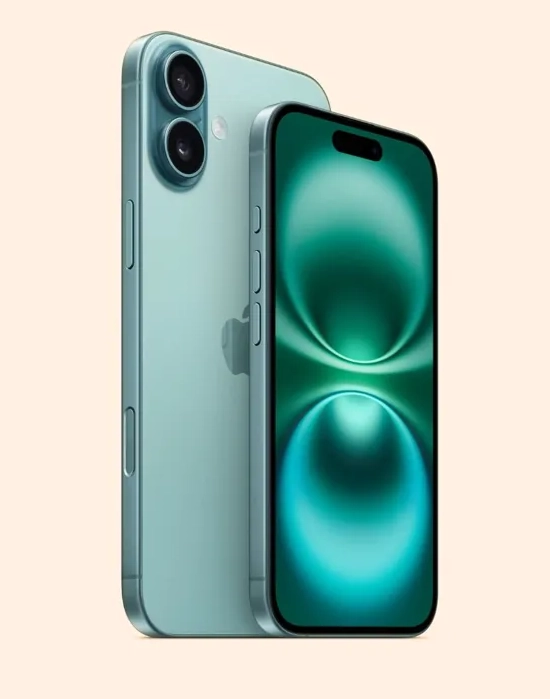
Consider this phone if you want reliable performance and lower cost for texting, streaming, and social media, but skip it if you need pro-level photography or the highest display specs.
Good Sides
Generally, the iPhone 16e gives you a premium experience at a budget price, combining a modern design, strong battery life, and useful features that make it feel closer to higher-end models.
You’ll appreciate the updated look: an aluminum frame, matte-glass back, and Face ID notch that replaces old Touch ID for faster, secure access with facial recognition.
The 6.1-inch almost-all-screen display reaches 1,200 nits, so outdoor visibility is excellent.
Charging is simpler now with USB-C, and fast charging got practical—47% in 30 minutes with a 20 W adapter.
Battery life stands out; heavy use still yielded about 36 hours in testing.
It also supports Apple Intelligence, giving you built-in AI tools for writing and photo edits that grow over time.
Flaws
The iPhone 16e still aims at budget-minded buyers, but it has a few notable shortcomings you should weigh before buying. You’ll pay about $170 more than for the third‑generation iPhone SE, so the “budget” label is relative; consider whether those extra features justify the higher price.
Photo quality is another compromise: the single 48‑megapixel rear camera produces good shots in daylight, but it can’t match the versatility or low-light performance of multi‑lens systems on pricier models.
The phone supports wireless charging, which charges the battery without plugging in, but it lacks MagSafe compatibility, so you can’t snap magnetic accessories to the back.
If those trade-offs matter, compare models before you commit.
For Whom
If you’re after a solid iPhone experience without the high price, the iPhone 16e fills that role well and is best suited for everyday users, students, and budget-conscious buyers who still want reliable performance.
You’ll find this affordable iPhone ideal if you use apps for note-taking, streaming, light gaming, and social media without needing flagship-level specs.
As a reliable iPhone, it gives fast responsiveness and a capable camera that handles daylight photos and casual video; you won’t get pro-grade depth, but you’ll capture clear memories.
Its long-lasting battery supports a full day of mixed use; carry a small power bank for heavy travel.
Choose the 16e when you want solid core features, low cost, and minimal compromise.
The Latest Android Phone: Google Pixel 10
You’ll want to start by looking at the Pixel 10’s good sides, like its clean Android software, fast Tensor chipset for smooth multitasking, and improved camera features that help you shoot sharper low-light photos.
Then consider the key flaws — such as potentially shorter battery life under heavy use, limited storage tiers unless you pay more, and software quirks that might require updates — and weigh how those affect your daily routine.
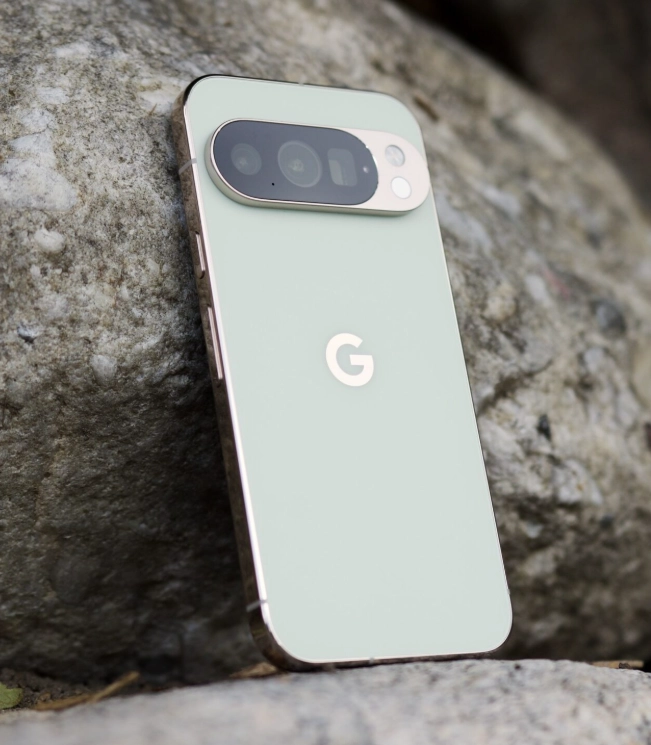
Finally, think about who it’s for: it’s a strong pick if you value timely Android updates, computational photography, and tight Google integration, but not the best choice if you need the longest-lasting battery or the most affordable base storage.
Good Sides
Often you’ll notice the Pixel 10 looks and feels like a true high-end phone, thanks to its glass back, matte-metal frame, and rounded corners that mirror Pro models’ premium design.
You’ll appreciate the Google Tensor G5 chip for smooth daily performance and AI tricks like Edit with Ask Photos, which edits images from prompts.
The triple-camera system gives you a 48MP main, ultrawide, and a 5x telephoto for close shots without losing detail; Super Res Zoom extends that to 20x.
Pixelsnap magnetic wireless charging makes attaching chargers and stands effortless.
Battery life should get you through a full day of calls, messaging, streaming, and light gaming, though heavy use shortens that span. Use a case to prevent slips.
Flaws
The Pixel 10 gets a lot right on design and daily use, but it also has some clear weaknesses you’ll want to weigh before buying.
One notable flaw is video overexposure: footage can blow out highlights in bright scenes, losing detail in skies or faces. That’s a technical shortcoming in the camera’s exposure control, which adjusts brightness automatically.
Another practical issue is battery life—our tests showed about 12 hours on the Pixel 10, shorter than many competitors. For example, the Pixel 9a, Google’s current budget phones model, lasts a little over 15 hours thanks to a bigger battery. If you rely on long usage between charges, consider these differences carefully and test power settings and adaptive brightness to mitigate drain.
For Whom
If you’re deciding who the Pixel 10 is best for, start by matching its strengths to your daily needs: the phone suits people who want a premium-feeling Android handset with a bright, easy-to-read screen, a versatile triple-lens camera that produces consistently strong photos, and built-in AI tools that simplify tasks like transcription and photo editing.
You’ll like the google pixel 10 if you value a premium build without overspending, want reliable software updates through 2032, and prefer tools that automate work. For example, journalists can transcribe interviews using ai features, while travelers use the triple-lens camera for wide and zoom shots. If you need longevity and smoother performance, the update promise and sturdy design make it a smart, practical pick.
The Latest Android Phone if You Like Larger Displays: Google Pixel 10 Pro XL
If you want a larger-screen Android, the Google Pixel 10 Pro XL offers a vibrant 6.7-inch OLED display that’s great for streaming and multitasking, plus a battery that usually lasts a full day under moderate use.
You’ll appreciate its pro-level camera system and smooth performance, but be aware it can feel heavy in one hand and some advanced features may use more battery—”OLED” means each pixel lights independently for deeper blacks.
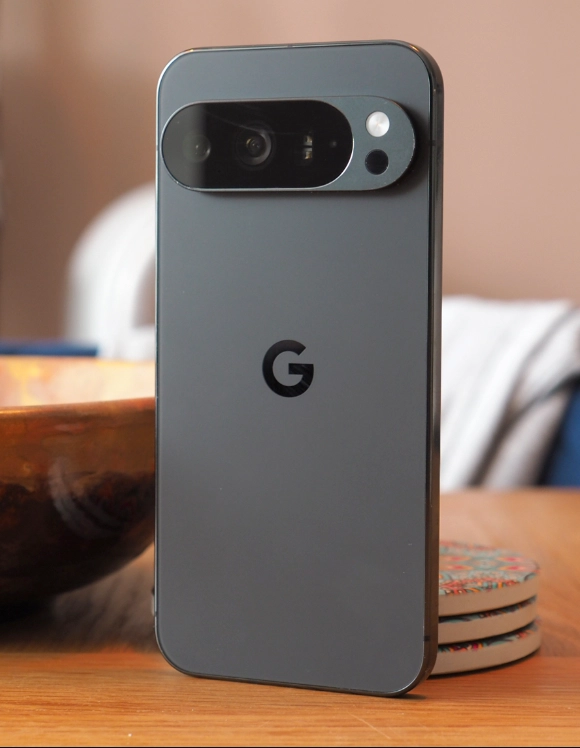
Consider it if you watch lots of video, edit photos on the phone, or prefer roomy touchscreen controls, and test it in person to confirm the size and weight suit your grip.
Good Sides
Often you’ll find the Pixel 10 Pro XL feels more like a tablet in your hand, and that’s a good thing if you prefer larger displays for media and multitasking.
You get an 8-inch 120hz display feel—actually a 6.8-inch OLED with a 120 Hz refresh rate—that makes videos, ebooks, and split-screen apps easier to read and interact with.
The Tensor G5 chip keeps everything smooth, handling app switching and AI features without lag; AI features are tools that automate tasks, like improving photos.
The 5,200 mAh battery gives multi-day endurance for typical use, and heavy days still leave ample charge.
Camera bonuses include Pro Res Zoom, which combines the telephoto lens and on-device AI to retain detail when you zoom.
Flaws
You’ve got a lot to like about the Pixel 10 Pro XL, but its weaknesses are worth weighing before you buy.
You’ll notice a clear price increase versus the Pixel 9 Pro XL — the top-tier configuration hits $1,550 — and that stings when many upgrades are primarily software upgrades.
Software upgrades mean new features delivered by code, not faster chips or better cameras, so hardware stays similar.
That affects the device’s value proposition: you’re paying more for functionality you might get via updates on older models.
If you care about long-term resale or upfront cost, factor that into your decision.
You should compare included storage, warranty terms, and whether those software gains matter day-to-day for your use.
For Whom
Think of the Pixel 10 Pro XL as the go-to choice when you want a large-screen Android that still fits daily use: its expansive display makes watching videos, editing photos, and reading long articles more comfortable, while the bigger battery gives you longer on-screen time between charges.
You should pick this phone if you value a large display for multitasking and media, plus reliable battery life that gets you through extended days. Its advanced camera system handles low-light shots and zoomed portraits, so you won’t need extra lenses.
Expect software updates and security patches through 2032, which keeps apps and protections current. If you prefer compact phones or tight pockets, consider smaller alternatives instead.
The Latest Foldable Phone: Google Pixel 10 Pro Fold
You’ll want to first look at the Pixel 10 Pro Fold’s good sides, like its roomy inner display for multitasking and the hinge design that keeps the screen flat for watching videos or running two apps side-by-side.
Then consider flaws such as added weight compared with a standard phone, a higher price, and possible creasing where the fold meets—crease refers to the slight line you can sometimes feel along the fold.
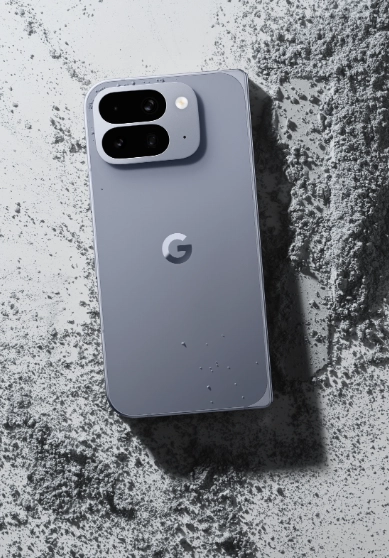
Finally, think who it’s for: power users who run multiple apps, commuters who value a compact tablet-like screen, or anyone who’s willing to trade lower battery life and extra cost for flexible screen space.
Good Sides
Often the Pixel 10 Pro Fold stands out for making foldable phones more practical, not just flashy: Google focused on durability with an upgraded IP68 rating (full dust protection and water resistance), a gearless hinge that’s twice as durable as the Pixel 9 Pro Fold’s, and a redesigned main display that adds an extra film layer to improve drop resistance.
You’ll appreciate the chunkier, easier-to-hold design that keeps the phone steady on flat surfaces, and brighter cover and main displays (up to 3,000 nits) that make outdoor viewing simple.
The Tensor G5 chip with 16 GB of RAM handles multitasking and AI features smoothly.
Battery life is strong too: the 5,015 mAh cell reliably lasts almost 24 hours with heavy use.
Flaws
Although the Pixel 10 Pro Fold delivers on durability and performance, it still has a few notable drawbacks you should know about.
You won’t get Google’s pro res zoom on the google pixel 10 pro fold, a generative-ai feature that lets the standard Pixel 10 Pro and Pro XL shoot up to 100x zoom without losing detail. That omission matters if you rely on long-range shots for events or nature photography.
Also, despite a durable chassis that resists bending and impacts, the matte back scratches easily; small abrasions show up quickly on lighter finishes. If you skip a case, choose the darker gray variant to hide scrapes.
In short, weigh camera needs and cosmetic protection before buying.
For Whom
Who benefits most from the Pixel 10 Pro Fold? If you want a device that doubles as a phone and a small tablet, the pixel 10 pro fold fits that need.
You’ll use the cover display like a traditional phone for quick tasks, then open it for a larger workspace.
Students and professionals who do heavy multitasking—editing documents, running two apps side by side, or taking notes while viewing slides—gain the most.
Creators who stream or read ebooks will appreciate the larger main screen for clearer visuals.
As a tablet replacement, it’s lighter than carrying two devices and switches form factors instantly.
If you value flexibility and productivity over compact simplicity, this foldable phone is designed for you.
The Latest Budget Android Phone: Moto G Power (2025)
You’ll like the Moto G Power (2025) if you want long battery life, a clean Android interface, and solid basic cameras at a low price.
It has trade-offs—its processor is modest so demanding games or heavy multitasking may lag, and the display and low-light camera performance won’t match flagship phones.
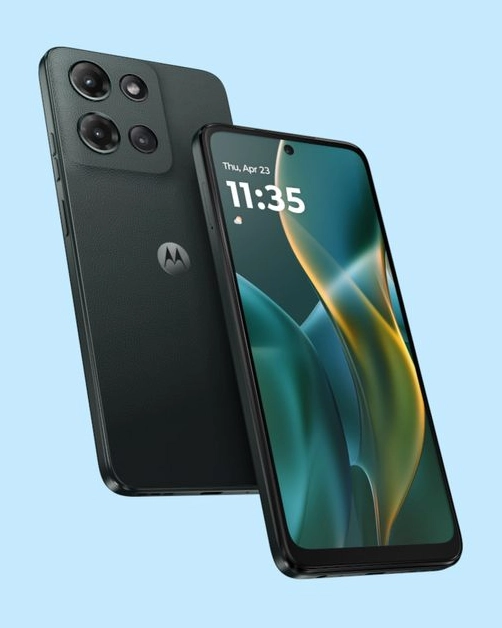
Consider it for students, parents, or anyone who needs dependable daily use and long standby time without paying for premium features.
Good Sides
Start with an impressive value proposition: for about $300, the Moto G Power (2025) delivers features you’d expect from pricier phones.
You get a large, bright screen that makes reading and multitasking comfortable, and the phone’s smooth performance keeps apps responsive.
Gaming stays lag-free for typical titles, so you won’t need top-end chips to play casually.
The large battery easily lasts two days with moderate to heavy use, reducing charger anxiety.
Dual-speakers deliver fuller sound than single-speaker rivals, so media and calls sound clearer.
Built-in extras like an FM radio work with wired headphones, giving offline listening without subscriptions.
Flaws
The Moto G Power (2025) still has some clear compromises that matter if you expect flagship-level convenience. You’ll appreciate that the battery will last through a day or more of heavy use, but charging shows a trade-off: the long charging time means you’ll need to plan overnight or long breaks to top up.
You should also note software support limits — the phone ships with Android 16 and only gets three years security updates, so security patches and minor improvements stop with support ending 2028. That affects how long your device stays protected against vulnerabilities. If you rely on fast top-ups or long-term OS feature updates, these constraints are practical downsides worth weighing before you buy.
For Whom
If you want a straightforward, no-frills phone that lasts well between charges and won’t break the bank, the Moto G Power (2025) is built for that exact use.
You’ll appreciate the moto g power if you value long battery life over flagship speed; batteries that stretch through a full day mean less charging and fewer battery anxiety moments.
The big screen suits streaming, web browsing, and reading without demanding top-tier processing.
Choose this among budget phones when you need reliable basics: solid call quality, decent cameras, and expandable storage.
If you prefer stylus input or note-taking, consider the motorola moto g stylus instead, since it adds a pen for precise control and creative work.
Final Verdict
You’ll find power and simplicity side by side: the iPhone 17 and Pixel 10 chase flagship speed and camera mastery, while the iPhone 16e and Moto G Power save money with long battery life. If you want bigger screens, choose the Pro Max or Pixel 10 Pro XL; if you like folding displays, try the Pixel 10 Pro Fold.
Test each phone hands‑on to check ergonomics, camera samples, and real‑world battery life before you buy.
FAQs
-
What Are the Latest Smartphones Right Now?
The latest smartphones right now include the iPhone 16 lineup, Samsung Galaxy S25 series, Google Pixel 10 Pro, and OnePlus 13. These models deliver faster processors, improved cameras, and longer battery life. Most 2025 releases support advanced AI features and full-band 5G performance.
-
What New Smartphone Features Are Trending in 2025?
The trending smartphone features in 2025 include on-device AI processing, advanced camera sensors, satellite connectivity, and 120Hz adaptive displays. Manufacturers also add improved battery efficiency, faster charging over 80W, and secure biometric options like ultrasonic fingerprint scanners.
-
What Is the Difference Between Flagship and Budget Smartphones?
The main difference between flagship and budget smartphones is performance, camera quality, and build materials. Flagship phones use premium processors, high-end cameras, and durable glass or metal. Budget phones use mid-tier chips, basic cameras, and plastic frames to reduce cost.
-
Are Foldable Phones Reliable Yet?
Foldable phones are reliable for daily use because new hinge designs, stronger ultra-thin glass, and water-resistant builds improve durability. Most 2024–2025 models last over 200,000 folds and resist scratches better than earlier versions. Reliability depends on hinge strength and screen protection.
-
Which Smartphones Have the Best Cameras?
The smartphones with the best cameras include the iPhone 16 Pro Max, Google Pixel 10 Pro, Samsung Galaxy S25 Ultra, and Huawei P70 Pro. These models deliver stronger low-light performance, advanced computational photography, and optical zoom ranges between 5x and 10x.


